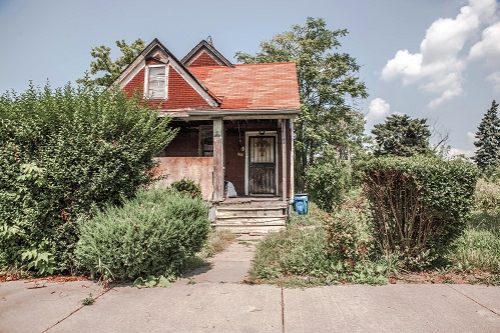What is the 80% rule in home insurance?
The 80% rule, or 80/20 rule, requires homeowners to carry dwelling coverage of at least 80% of the home’s calculated replacement cost. This rule ensures that the insurance company is charging the correct premium amount required to properly insure the home.
Using the 80% rule, insurance companies can adjust the amount of a claim payout based on how far below the 80% mark the dwelling coverage is. The 80% rule only applies to partial payouts; the full amount will be paid if the damage meets or exceeds the policy limits.
“Insurance companies use the 80/20 rule to encourage homeowners to insure at least 80% of their house value for full payment of the actual loss within the policy limit,” Yao says.
How does the 80% rule for home insurance work?
The 80% rule comes into play when you file a claim against your homeowners insurance. The dwelling coverage portion of your home insurance is based on the replacement cost of your home. Replacement cost is calculated based on everything the insurance company knows about your home: its square footage, construction materials inside and out from the siding to the countertops, the number of bedrooms and bathrooms and other details.
When you file a claim against that coverage, your claim will be paid based on the current cost to repair or replace the damage rather than the depreciated cost. However, you may not get the full payout if you do not have the house insured for at least 80% of its replacement cost.
The 80% rule allows the insurance company to reduce the claim payout amount based on how far below that 80% mark your coverage is. You’ll have to pay the rest out of pocket.
How to calculate how much you will pay if you don’t meet the 80% rule
Insurance companies use a simple calculation to determine how much they will pay and how much you will have to cover if you don’t meet the 80% rule.
Let’s say your home has a replacement cost of $400,000. To meet the 80% rule, you would need to carry at least $320,000, which is 80% of $400,000.
You have a replacement cost on your policy of $275,000, which is under the 80% mark of $320,000. A fire damages your home, and you file a claim for damages of $100,000.
The insurance company will calculate what percentage of the required coverage you are carrying, like this:
Insurance carried/insurance required x amount of the loss = amount insurance will pay.
In the example above, the calculation looks like this:
$275,000/$320,000x$100,000= $85,937.50
The deductible will also be removed from that amount, so if the deductible is $1,000, the total insurance payout will be $84,937.50. You would have to pay the remaining $15,062.50.
What happens if you fail to meet the 80/20 rule in home insurance?
Failure to meet the 80/20 rule will affect you when you file a claim. As detailed above, the insurance company will not pay the full amount of your claim if you don’t have the right replacement cost amount. That could leave you out of pocket by thousands of dollars.
And, of course, your home will be underinsured, which is a big risk in the case of a total loss.
“Some homeowners do it on purpose to reduce their premiums betting on lower losses in the future, which could cause lots of problems for insurance companies in terms of underwriting, adjusting, marketing, and reinsurance etc.,” Yao says.
It’s also a big risk to you if you have a major loss.
Do home improvements affect the 80% rule?
Home improvements affect the replacement cost value of your home, which in turn affects how much the 80% mark is to avoid being underinsured.
Consider the example above: your home’s replacement cost is $400,000, but in this case you have insured at the 80% mark of $320,000.
You complete a major remodel in your kitchen, adding $45,000 to the replacement cost of your home. Your replacement cost is now $425,000, the 80% mark is now $340,000, and you are underinsured.
If you make any changes to your home that increase its replacement cost, it’s important to call your insurance company and adjust your coverage accordingly.





